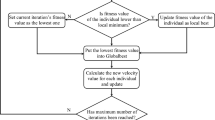Abstract
An efficient simplified method is proposed for the time domain design of industrial proportional-integral-derivative (PID) controllers and lead-lag compensators for high order single input single output (SISO) systems. The proposed analytical method requires no trial error steps for a lead-lag compensator design in the time domain by using the root-locus method. A practical PID controller design method was obtained based on the corresponding lead-lag compensator to give a required time-domain specification. Simulation studies were carried out to illustrate the control performance of the controllers by the proposed method. The proposed PID controller and lead-lag compensator directly satisfied time domain control specifications such as damping ratio, maximum overshoot, settling time and steady sate error without trial and error steps. The suggested algorithm can easily be integrated with a toolbox in commercial software such as Matlab.
Similar content being viewed by others
References
K. J. Åström and T. Hägglund, Control Eng. Pract., 9, 1163 (2001).
H. Thu and M. Lee, Korean J. Chem. Eng., 30, 2151 (2013).
T. Vu, and M. Lee, Korean J. Chem. Eng., 30, 546 (2013).
H. Y. Horng, 2013 International Symposium on Next-Generation Electronics, 579 (2013).
G. F. Franklin, A. Emami-Naeini and J. D. Powell, Feedback control of dynamic systems, Pearson Prentice Hall, Upper Saddle River, N. J. (2006).
D.-J. Wang, Automatica, 45, 1026 (2009).
R. Zanasi, S. Cuoghi and L. Ntogramatzidis, Int. J. Control, 84, 1830 (2011).
K. S. Yeung, K. W. Wong and K. L. Chen, IEEE Trans. Educ., 41, 76 (1998).
B. Vanavil, A. V. N. L. Anusha, M. Perumalsamy and A. S. Rao, Chem. Eng. Commun., 201, 1468 (2014).
A. P. Loh, X. Cai and W. W. Tan, Automatica, 40, 423 (2004).
N. Tan, Computers & Electrical Engineering, 29, 835 (2003).
J. Xu, 27th Chinese Control Conference, 16-18 July 2008, pp. 752–757.
R. Zanasi and S. Cuoghi, IFAC Proceedings, 45, 524 (2012).
Z. Y. Nie, Q. G. Wang, M. Wu, Y. He and Q. Qin, Ind. Eng. Chem. Res., 50, 1330 (2011).
W. C. Messner, M. D. Bedillion, X. Lu and D. C. Karns, IEEE Control Syst., 27, 44 (2007).
K. Ogata, Modern control engineering, Prentice Hall, Upper Saddle River, NJ (2002).
K. Ogata, Modern control engineering, Prentice Hall, Englewood Cliffs, NJ (1990).
M. C. M. Teixeira, IEEE Trans. Educ., 37, 63 (1994).
Q. Zhang and W. C. Messner, Proc. 2011 Am. Control Conf., 693 (2011).
R. T. O’Brien and J. M. Watkins, Proc. 2005 Am. Control Conf., 7, 4935 (2005).
S. W. Sung and I.-B. Lee, Chem. Eng. Sci., 55, 1883 (2000).
J. G. Ziegler and N. B. Nichols, InTech, 42, 94 (1995).
I. Kaya, Comput. Chem. Eng., 28, 281 (2004).
K. J. Åström and T. Hägglund, Automatica, 20, 645 (1984).
I. J. Gyöngy and D. W. Clarke, Control Eng. Pract., 14, 149 (2006).
P. Kumar Padhy and S. Majhi, ISA Trans., 48, 423 (2009).
A. Leva, Eur. J. Control, 3, 150 (1997).
K. G. Papadopoulos and N. I. Margaris, J. Process Control, 23, 905 (2013).
K. K. Tan, T. H. Lee and X. Jiang, ISA Trans., 39, 219 (2000).
M. Zhuang and D. P. Atherton, Control Theory and Applications, IEE Proceedings D, 140, 216 (1993).
D. E. Seborg, T. F. Edgar and D. A. Mellichamp, Process dynamics and control, Wiley, Hoboken, NJ (2004).
J. Lam, Int. J. Control, 57, 377 (1993).
A. T. Bahill, IEEE Contr. Syst. Mag., 3, 16 (1983).
Author information
Authors and Affiliations
Corresponding author
Rights and permissions
About this article
Cite this article
Tchamna, R., Lee, M. Simplified design of proportional-integral-derivative (PID) controller to give a time domain specification for high order processes. Korean J. Chem. Eng. 34, 961–968 (2017). https://doi.org/10.1007/s11814-017-0007-3
Received:
Accepted:
Published:
Issue Date:
DOI: https://doi.org/10.1007/s11814-017-0007-3




